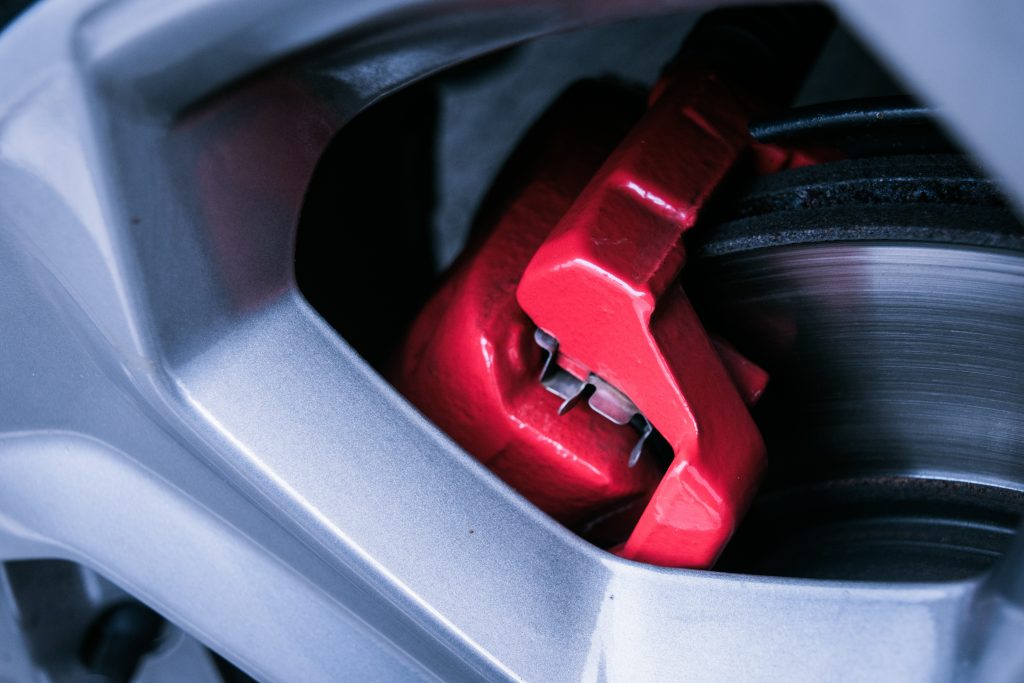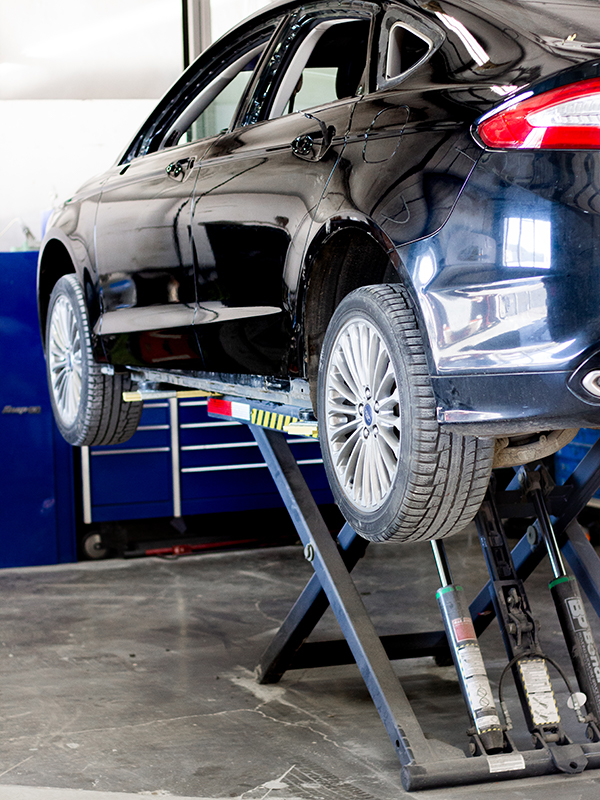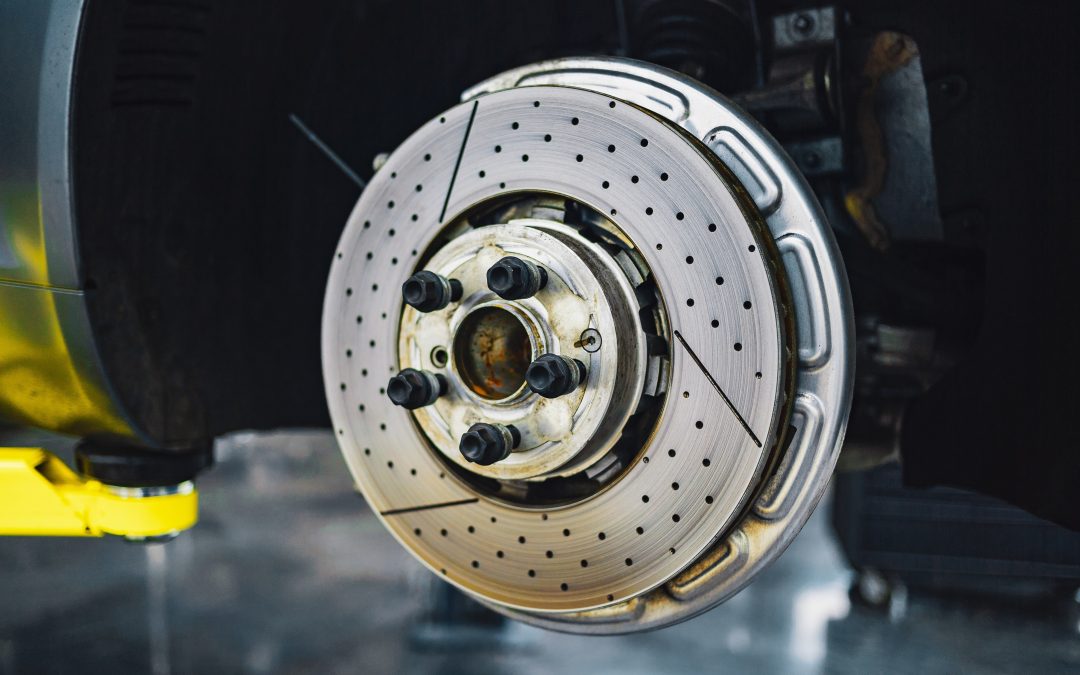Why Tire and Brake Care is Important

Proper car tire and brake care is essential for maintaining your vehicle’s overall performance, safety, and fuel efficiency. Ensuring that your tires and brakes are in excellent working condition will significantly contribute to a smoother driving experience and prevent unforeseen mishaps. Regular maintenance will also increase the longevity of these critical components, saving you money in the long run by avoiding costly repairs and replacements. Furthermore, well-maintained tires and brakes will provide better traction, handling, and stopping power, which are crucial factors in safe driving.
Safety Concerns Related to Tire and Brake Maintenance
Neglecting tire and brake maintenance poses a variety of safety risks. Worn-out or underinflated tires may lead to decreased traction and control, making it difficult to maneuver during emergencies or in adverse weather conditions like rain or snow. Additionally, poorly maintained tires could cause tire blowouts or premature wear, which could result in accidents. Similarly, poorly maintained brakes may lead to increased stopping distances, brake fade, or even brake failure, all of which could endanger you, your passengers, and other drivers on the road.
Longevity and Fuel Efficiency Benefits
Maintaining your tires and brakes not only ensures a safer driving experience but also contributes to your vehicle’s longevity and fuel efficiency. Proper tire maintenance, such as routine pressure checks and rotations, can extend your tires’ lifespan and improve your vehicle’s fuel economy. Similarly, keeping your brakes in good condition by regularly inspecting and replacing worn pads, rotors, and fluid will help prevent more expensive repair bills and ensure optimal performance.
Common Problems and Solutions
Several common issues may arise with tires and brakes if they are not maintained properly. For tires, these include uneven wear, slow punctures, and inadequate air pressure. Solutions to these problems include regular tire inspections, pressure checks, rotations, and alignments. For brakes, common issues include worn pads, warped rotors, and low brake fluid. Regular brake inspections, pad replacements, and fluid exchanges can help address these problems and keep your vehicle running safely and efficiently.
At Mid-Valley auto body, we offer a comprehensive range of tire and brake services to ensure your vehicle stays in top condition. Regular maintenance paired with driving techniques that prioritize safety can prevent emergency situations and extend the life of your car’s tires and brakes, giving you peace of mind on the road.
Car Tire Maintenance and Care

Checking Tire Pressure
- Importance of Proper Tire Pressure: Maintaining the correct tire pressure is crucial for vehicle safety, fuel efficiency, and extending the life of your tires.
- Frequency of Checking Tire Pressure: It’s recommended to check tire pressure at least once a month or before long trips. Remember that tire pressure changes with temperature variations.
- How to Check Tire Pressure: Use a tire pressure gauge to measure the pressure of each tire and compare it to the recommended PSI (pounds per square inch) specified in your vehicle owner’s manual. Don’t forget to check the spare tire as well.
Tire Rotation
- Purpose of Tire Rotation: Rotating tires ensures even wear, resulting in improved handling, a smoother ride, and a longer tire life.
- Frequency of Tire Rotation: Tire rotation should be performed every 5,000 to 7,000 miles or as recommended by your vehicle manufacturer.
- Tire Rotation Patterns: Tire rotation patterns depend on the type of vehicle and tires. Consult your owner’s manual or a professional for the correct pattern for your vehicle.
Wheel Alignment and Balancing
- Wheel Alignment Benefits: Proper wheel alignment reduces tire wear, improves fuel efficiency, and ensures optimal handling and tire performance.
- Signs of Misalignment: If your vehicle pulls to one side, steering becomes difficult, or you experience uneven tire wear, it’s time to have your wheels aligned.
- Wheel Balancing Importance: Proper wheel balancing minimizes vibrations, prevents uneven tire wear, and prolongs the life of your tires and suspension components.
- Signs of Unbalanced Wheels: If your vehicle vibrates at certain speeds, or you notice uneven tire wear, it’s time to have your wheels balanced by a professional.
Recognizing Signs of Tire Wear
- Tread Depth: Check your tire tread depth regularly to ensure it’s within the safe range. Replace tires when the tread depth reaches 2/32 of an inch or if you see the tread wear indicator bars.
- Uneven Wear Patterns: Uneven wear patterns could indicate issues with alignment, balance, or suspension. Take your vehicle to a professional for inspection and necessary repairs.
- Tire Damage: Inspect your tires for cuts, cracks, punctures, or sidewall bulges. Damaged tires may compromise vehicle safety and should be replaced immediately.
Car Brake Maintenance and Care
Inspecting Brake Pads and Discs
Regular inspection of your brake pads and discs is crucial to ensure smooth and safe vehicle operation. The process involves:
- Visual examination of the brake pads for wear and tear. Check for cracks, uneven wear, and reduced thickness (less than 1/4 inch).
- Inspecting brake discs for grooves, hot spots, and excessive rust. Uneven surfaces can lead to reduced braking efficiency and potential safety hazards.
- If necessary, consider replacing or resurfacing brake pads and discs to mitigate issues and prolong their lifespan.
Proper inspection and maintenance prevent costly repairs and ensure the longevity of your brake system. Mid-Valley Automotive can help with comprehensive brake inspections and necessary replacements.
Replacing Brake Fluid
Brake fluid plays a vital role in the transfer of force from the brake pedal to the brake calipers. It’s essential to replace the brake fluid periodically for optimal performance. Key points to remember include:
- Brake fluid is hygroscopic, meaning it absorbs moisture from the atmosphere, reducing its effectiveness over time.
- Contaminated brake fluid can cause corrosion and damage to brake system components, leading to expensive repairs.
- Follow your vehicle’s manufacturer guidelines on the ideal interval for brake fluid changes, typically every 2-3 years or 30,000 miles.
- Always opt for high-quality brake fluid recommended by your vehicle’s manufacturer to ensure maximum brake system performance and longevity.
Addressing Brake Noise and Vibration Issues
Brake noise and vibration can be both annoying and indicative of potential problems within the brake system. Addressing these issues effectively involves:
- Identifying the cause of the noise or vibrations, which can range from worn brake pads and loose components to glazed rotors and misaligned calipers.
- Performing necessary repairs such as resurfacing or replacing brake discs, tightening or replacing loose components, and adjusting or replacing brake pads. This not only resolves the noise and vibration issues but also ensures better overall brake system performance.
- Consulting a professional at Mid-Valley Automotive if you’re unsure of the cause or severity of the problem to prevent potential safety hazards and further damage to the brake system.
Understanding the Warning Signs of Brake Problems
Being aware of warning signs indicating potential brake problems can help you take preventive measures and maintain a safe driving experience. Some key warning signs include:
- Spongy or soft brake pedal: This might indicate air or moisture in the brake fluid or a problem with the master cylinder.
- Brake warning light: If your brake warning light illuminates on your dashboard, it’s essential to have your brake system inspected by a professional to identify and resolve the issue.
- Strange noises or grinding: These can be caused by worn brake pads, damaged rotors, or other brake system component issues.
Don’t ignore warning signs; address them promptly to ensure your safety and prevent costly repairs. For assistance in identifying and resolving brake issues, consult the expert technicians at Mid-Valley Automotive.
Choosing the Right Tires and Brakes for Your Vehicle
Selecting the right tire size
Selecting the right tire size is crucial for your vehicle’s optimal performance and safety. To determine the best size, consider the following factors:
- Vehicle manufacturer recommendations: Refer to your owner’s manual or the label on your driver’s side door jamb for specific tire size and load requirements.
- Driving conditions: Consider the typical weather and road conditions you encounter. For example, if you regularly drive on wet or snowy roads, you may opt for a slightly narrower tire for better traction.
- Custom modifications: If you’ve made custom modifications to your vehicle such as lift kits or suspension changes, calculate the appropriate tire size accordingly.
Understanding tire types and performance characteristics
Different tire types offer varying performance characteristics suited to specific driving needs. Some common tire types include:
- All-season tires: Designed for a balance of performance in various conditions, including moderate winter conditions and dry roads.
- Summer/performance tires: Offer excellent grip and handling on dry and wet roads, but not suitable for cold temperatures or snowy conditions.
- Winter/snow tires: Provide improved traction on snow and ice, with specialized rubber compounds that remain flexible in cold temperatures.
- Off-road tires: Designed for off-road adventures with aggressive tread patterns and enhanced puncture resistance.
Understanding the performance characteristics of each tire type will help you choose the right tire for your driving needs.
Choosing quality brake components
To ensure reliable stopping power and durability, invest in quality brake components. Consider these factors when selecting the right components:
- Brake pads: Opt for brake pads made from a reputable manufacturer, with materials suitable for your driving conditions (e.g., ceramic, semi-metallic, or organic).
- Rotors: Choose from vented, slotted, or drilled rotors according to your vehicle’s requirements and your desired braking performance.
- Calipers: Ensure the calipers are a proper fit for your vehicle and match the desired rotor and brake pad combination.
- Brake fluid: Look for a high-quality brake fluid that meets or exceeds your vehicle manufacturer’s specifications.
When to consult a professional
While you can perform basic brake and tire maintenance yourself, it’s wise to consult a professional for more complex tasks or when you’re unsure about your choices. Seek expert advice in the following situations:
- Upgrading components: If you’re considering performance or off-road upgrades, consult a professional to ensure you choose compatible and safe components.
- Troubleshooting issues: If you experience unusual noises, vibrations, or a reduction in braking performance, it’s time to consult a professional. Visit Mid-Valley Automotive Center for a thorough inspection and diagnosis.
- Replacing worn components: While it’s possible to replace brake pads or tires yourself, having a professional handle these tasks guarantees proper installation and safety. Schedule an appointment with your trusted auto repair shop for expert service.
Preventive Measures for Tire and Brake Issues
Regular Inspection Schedules
As the saying goes, an ounce of prevention is worth a pound of cure. Regular inspections play a crucial role in ensuring that your car tire and brakes stay in optimum condition. For this reason, it is essential to schedule a routine check-up for your tires every 5,000 to 7,000 miles. Moreover, conduct a thorough brake inspection at least once a year, as indicated by Tires Plus. By adhering to these maintenance schedules, you can identify potential issues and address them before they escalate, ensuring the safety and longevity of your vehicle.
Maintaining Proper Tire Pressure
Maintaining proper tire pressure not only enhances fuel efficiency but also minimizes the risk of tire-related accidents. To ensure the correct tire pressure, make it a habit to check the pressure levels at least once a month. Always use a reliable tire pressure gauge, and refer to your vehicle’s owner manual to determine the recommended tire pressure suitable for your car. Remember, underinflated tires may lead to poor fuel efficiency and quicker wear, while overinflated tires can cause a harsh ride and negatively impact handling.
Avoiding Overloading Your Vehicle
Every vehicle has a maximum load capacity, which, if exceeded, can put unnecessary strain on your tires and brakes. Overloading can lead to premature wear and tear and affect the overall performance of your car. To avoid overloading, always refer to your car’s owner manual to check the weight limits, and abide by them diligently. By doing this, you can minimize potential damage to your car tire and car brakes and ensure their longevity.
Practicing Safe Driving Techniques
Though often overlooked, safe driving techniques play a vital role in car tire and car brakes care. Maintain a safe distance from the vehicle in front, avoid excessive acceleration or hard braking, and avoid making sharp turns or sudden stops. Additionally, be cautious when driving over potholes or uneven surfaces, as they might damage your tires and suspension system. By practicing safe driving techniques, you can prevent unnecessary strain on your car’s tires and brakes, prolonging their life while also ensuring a smooth and comfortable ride. Furthermore, being a responsible driver not only keeps you and your passengers safe but also contributes to a safer community, reflecting the values of Mid-Valley Automotive.
Dealing with Emergency Tire and Brake Situations
How to Handle a Tire Blowout
- Remain calm: Keep a cool head and avoid panicking when a tire blowout happens.
- Hold the steering wheel firmly: A stable grip on the steering wheel helps maintain control of the vehicle.
- Avoid slamming on the brakes: Braking hard can cause you to lose control. Instead, allow the car to naturally lose speed.
- Signal and move to a safe location: Once your speed has dropped, signal and cautiously move your car to a safe spot where you can assess the damage.
What to Do if Your Brakes Fail
- Downshift: Immediately shift to a lower gear, allowing engine braking to slow the car down.
- Try pumping the brakes: This can potentially build enough pressure to regain some braking function.
- Use the emergency brake: Deploy the emergency brake (handbrake or foot brake) slowly and carefully to avoid sudden stops or spinning out.
- Look for a safe stopping area: As the car slows, scan the area for a safe place to bring the vehicle to a complete stop.
Emergency Braking Techniques
- Threshold braking: Apply steady pressure to the brake pedal, just below the point where the wheels lock up. This maximizes braking efficiency without losing traction.
- ABS: For vehicles with anti-lock brakes, apply firm, constant pressure to the brake pedal (the system will automatically prevent wheel lock-up).
- Brake and steer: As you apply the brakes, steer gently to avoid obstacles and maintain control.
When to Call for Roadside Assistance
- Severity of the issue: If you’re unable to safely repair the problem on the side of the road, call for help from a professional service like Mid-Valley Automotive.
- Location and vehicle condition: If you’re in an unsafe area, or if your vehicle is blocking traffic, calling for assistance is the best course of action.
- Lack of expertise or tools: If you don’t have the skillset or right equipment to address the problem, it’s better to rely on experts.
Conclusion
In conclusion, proper car tire and brake care is an essential aspect of vehicle maintenance that contributes to a safer and more efficient driving experience. By adhering to recommended maintenance schedules, practicing safe driving techniques, and addressing potential issues proactively, you can ensure that your car’s tires and brakes remain in their best condition. Consult with the experienced professionals at Mid Valley Automotive for assistance in maintaining and repairing your vehicle’s tires and brakes, and continue to embody the core values of our brand through purposeful, resourceful, and community-focused actions on the road.



